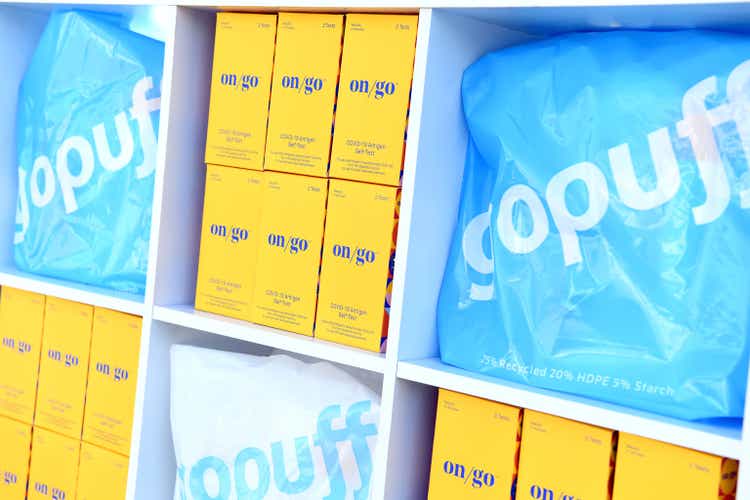Jon Kopaloff/Getty Images Entertainment
The “quick commerce” or “instant delivery” industry exploded on to the scene as a result of the COVID-19 pandemic. The very idea and definition of consumer convenience has forever changed. Instead of finding the nearest convenience store, most people head straight to the app store to see what delivery companies are operating in their area.
The overall shift in consumer behavior sent shockwaves through the industry and drew attention from investors. According to a recent Forbes article, the quick commerce industry was valued at around $25 billion in 2021. That number is expected to balloon to $72 billion by 2025.
Some of the most influential people in business are choosing who they want to associate their name with in this ultra-competitive, high growth market. Former Disney (DIS) CEO Bob Iger is one of the most recent names to throw his hat into the ring, investing and advising fast delivery company Gopuff – a company we talked about in March here.
Since his departure from Disney, Iger has been selective and predictive in his investment decisions. His biggest bets are on the metaverse, fast delivery and online presentation tools – a tech-forward approach to our future as a society.
So, in a market that includes so many players competing for first, what sets Gopuff apart for Iger?
For starters, the Philadelphia based startup has amassed quite the support system from investors. With the addition of Iger, the $15 billion company also has financial backing from Accel, Baillie Gifford, SoftBank’s Vision Fund and Fidelity Management, among others. Co-CEOs Yakir Gola and Rafael Ilishayev have aligned themselves with the right people, something Iger will add significant value to.
Gopuff also has a unique business model when compared to competitors, at least as unique as it gets in such a new industry. Companies who followed the pandemic model that we are all used to delivered goods from a third-party vendor such as your favorite local restaurant or coffee shop. The delivery company acts as the middleman by providing the transportation and convenience of delivery right to your door.
Where Gopuff differentiates itself is by eliminating the middleman by deploying a vertically integrated business model. Instead of relying on third party vendors, they manage their own inventory and supply chain through the use of micro-fulfilment centers (MFCs) in the markets that they serve. Nearly 600 MFCs service Gopuff’s territory – each stocked with roughly 3,000 items that are packaged and delivered quickly to customers by Gopuff employees. Control over inventory and holding direct relationships with suppliers eliminates a significant cost burden in working with third parties.
Standing up this differentiated model is arguably more difficult than the middleman model, but vertically integrated models are proven, successful long-term businesses. The network of MFCs and their strategic placement across the country could very well be the difference in achieving profitability, which would be a first for companies in the quick commerce space.
Indeed, current market dynamics have not been kind to the industry. DoorDash, Instacart, Deliveroo, Gorillas, Getir, Zapp and Gopuff have all been dealt significant blows. Whether that be fluctuating stock, internal restructuring, or decreased valuations, we are in a defining moment for the industry.
We may never see a comparable rush of cash and interest into quick commerce that we saw in the beginning stages of the pandemic. Most analysts argue that the industry may look vastly different following the current economy downturn and company adjustments.
Amid the noise and uncertainty, it’s clear that Gopuff has positioned itself with the right team and model to succeed.


Be the first to comment